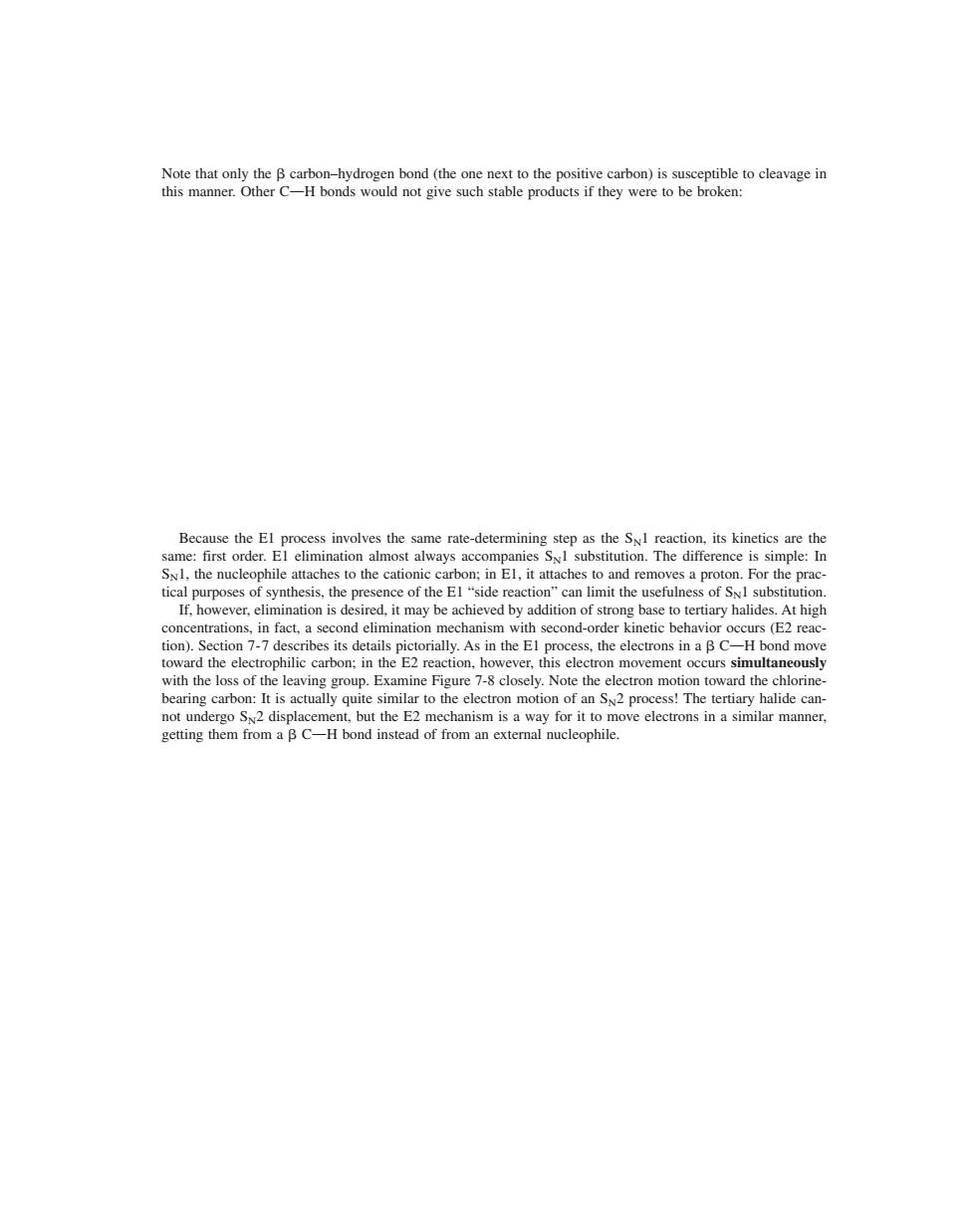正在加载图片...

Note that n hond (the involves the same rate-determin its kineti .the nucleophile attach sto the cationi or the prac If.however.elimination is desired.it may be achieved by addition of strong base to tertiary halides.At high concentrations.in fact.a second elimination mechanism with second-order kinetic behavior r occurs(E2 reac with the loss of the leaving group.Examine Figure 7-8 closely.Note the electron motion toward the chlorine bearing carb actually quite simil Note that only the carbon–hydrogen bond (the one next to the positive carbon) is susceptible to cleavage in this manner. Other COH bonds would not give such stable products if they were to be broken: Because the E1 process involves the same rate-determining step as the SN1 reaction, its kinetics are the same: first order. E1 elimination almost always accompanies SN1 substitution. The difference is simple: In SN1, the nucleophile attaches to the cationic carbon; in E1, it attaches to and removes a proton. For the practical purposes of synthesis, the presence of the E1 “side reaction” can limit the usefulness of SN1 substitution. If, however, elimination is desired, it may be achieved by addition of strong base to tertiary halides. At high concentrations, in fact, a second elimination mechanism with second-order kinetic behavior occurs (E2 reaction). Section 7-7 describes its details pictorially. As in the E1 process, the electrons in a COH bond move toward the electrophilic carbon; in the E2 reaction, however, this electron movement occurs simultaneously with the loss of the leaving group. Examine Figure 7-8 closely. Note the electron motion toward the chlorinebearing carbon: It is actually quite similar to the electron motion of an SN2 process! The tertiary halide cannot undergo SN2 displacement, but the E2 mechanism is a way for it to move electrons in a similar manner, getting them from a COH bond instead of from an external nucleophile.���